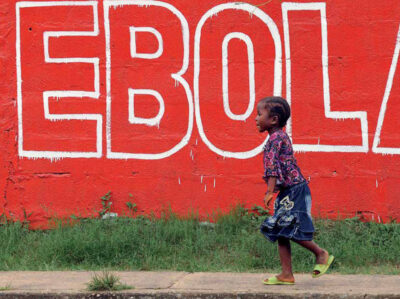Main content
The Doctor Global Health and Tropical Medicine (AIGT in Dutch: Arts Internationale Gezondheidszorg en Tropengeneeskunde) curriculum has evolved from the ‘tropical doctor’ training that had developed over several decades into a more structured and regulated training programme. It used to comprise clinical rotations in surgery and obstetrics & gynaecology, or paediatrics and obstetrics & gynaecology, ending with the Diploma course in Tropical Medicine at the Royal Tropical Institute (KIT). Financial pressure on the programme caused by new financing mechanisms in the Dutch health care system, combined with some quality issues within the programme, motivated the Netherlands Society of Tropical Medicine and International Health (NVTG) to seek formal accreditation of the ‘tropical doctor’ training programme with the Medical Specialties Council (CGS, College Geneeskundige Specialismen). It was thought that this accreditation would facilitate financing to secure continuity of the programme and improve its quality. To meet the criteria for accreditation, some adjustments had to be made to the programme. Most notably this was the addition of a 6-month training period in a hospital in a low and middle income country (LMIC) setting (Figure 1). Furthermore, the curriculum had to be redesigned in order to meet the standards set out by the CGS. Accreditation was awarded in 2012.
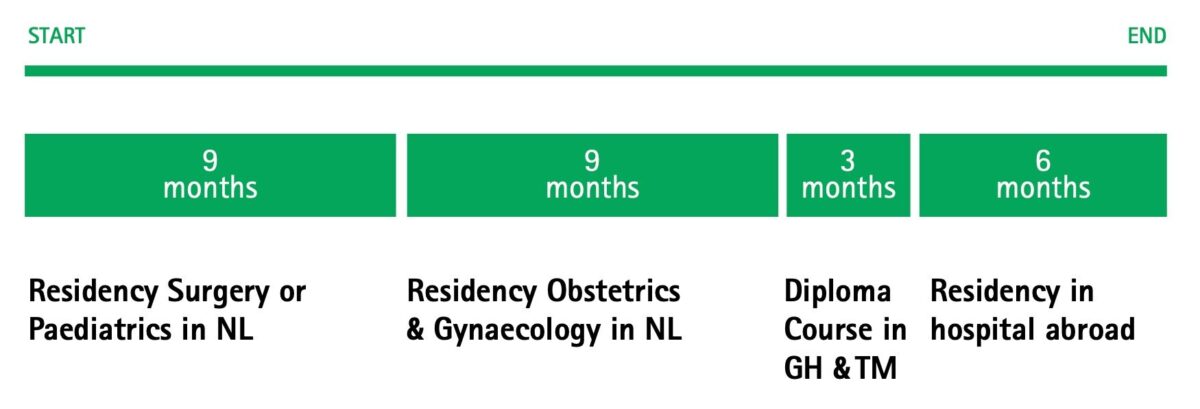
Organization
The accreditation triggered a revision of the organisational structure of the training programme. The OIGT training institute (Opleidingsinstituut Internationale Gezondheidszorg en Tropengeneeskunde) was created under an independent foundation in which the NVTG is represented in order to secure a smooth running of the programme and compliance with CGS regulations. The committee that used to organise the training programme on behalf of the NVTG was renamed the CIGT.
The OIGT is responsible for the organization, daily operation and quality of the training programme. The CIGT advises the OIGT on any related issues.
Currently, the training programme takes place in 25 hospitals in the Netherlands involving 35 trainers and an average of 25 residents who enrol in the AIGT training programme each year.
Review of the curriculum
In June 2016, the Registration Committee of Medical Specialists (RGS, Registratiecommissie Geneeskundig Specialisten) decided to renew the accreditation of the OIGT training institute for a duration of 5 years until 2021. The Committee at the same time recommended that the current curriculum, which was written in 2010/2011, be revised to make it more practical with clear descriptions of the two training profiles (surgery and obstetrics & gynaecology; mother & child health). The revised curriculum will be submitted to the CGS by 1 July 2018.
The NVTG has asked the CIGT to form an ad hoc committee to review the current curriculum (CHOA: committee to review the curriculum for AIGT). CHOA consists of representatives of OIGT, AIGT trainees, qualified AIGTs, surgery, paediatrics, obstetrics & gynaecology, and CIGT. At its first meeting in May 2017, CHOA decided to carry out a full review of the curriculum, taking into account the recommendations of the RGS. The curriculum needs to be simpler and more practical and flexible, based on competencies that are clearly described and that can be assessed. Better alignment with local curricula in training hospitals is also needed.
The revised curriculum
General description of AIGT
The dual character of training aimed at working in a tropical environment / LMIC setting as an AIGT and the value of the training and experience gained abroad after returning to the Netherlands is emphasized. This is in full alignment with the concept of global health in which the continuum of curative and preventive care is described in all societies, and which is also influenced by political, socio-economic factors and climate change. In the Netherlands, this is abundantly illustrated in relation to an increasingly multicultural society due to migration. Because of this background, diseases are encountered that used to be in the realm of travel medicine among travellers such as malaria, schistosomiasis and others. In addition, the spectrum of tropical medicine has changed over the years. For example, non-communicable diseases are becoming increasingly relevant such as diabetes and hypertension (Figure 2). Because of training received and experience gained in LMICs, the AIGT is uniquely qualified to address such conditions in vulnerable populations, while taking into account the cultural aspects of disease, and can therefore contribute to the quality of health care in the Netherlands after returning as well.
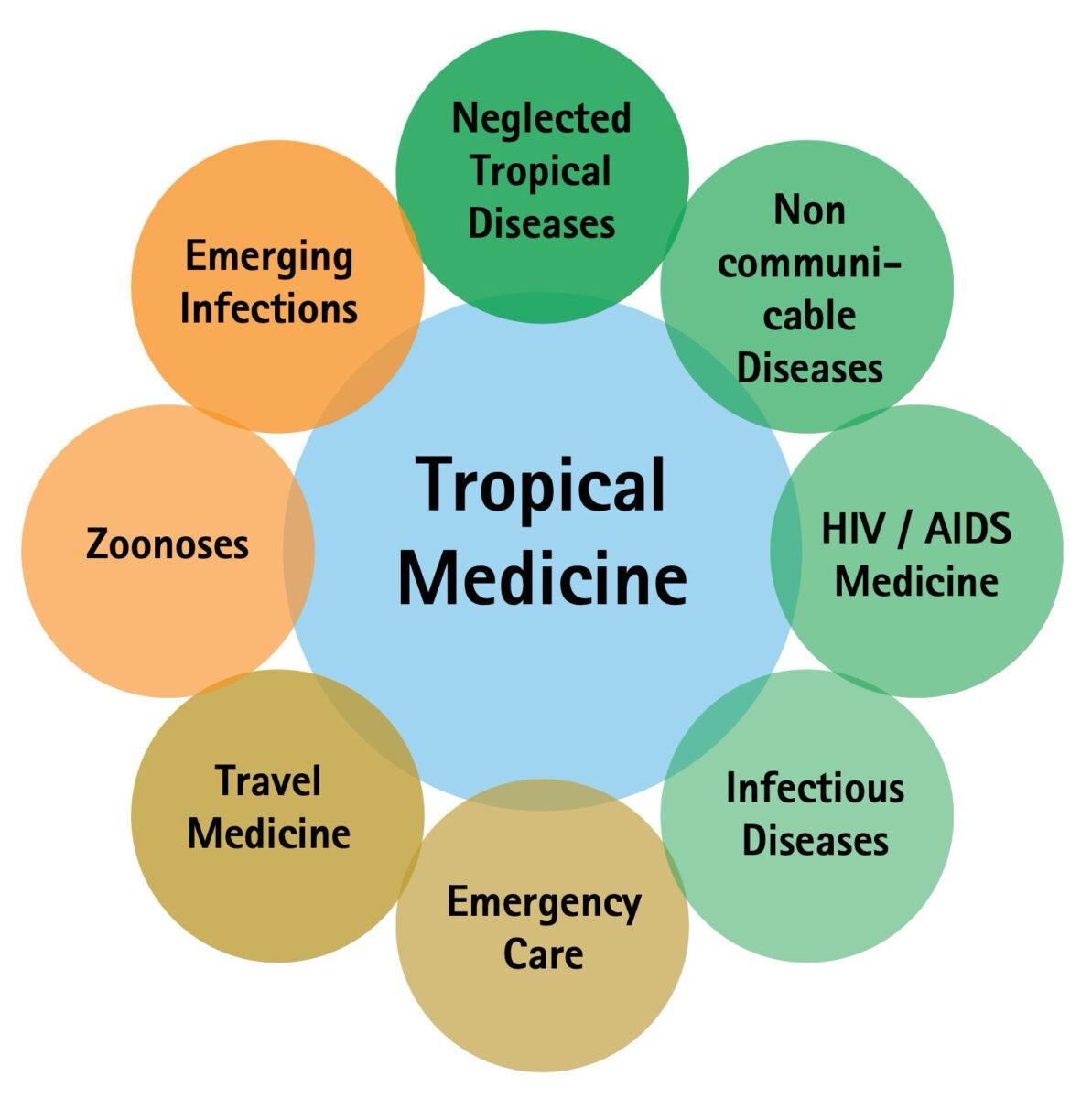
Competencies
While in the current version of the curriculum the CanMEDS (“Canadian Medical Education Directives for Specialists”) roles framework was used to derive competencies (Figure 3), it was felt that these mainly focus on the doctor as medical expert whereas the spectrum of AIGT competencies is much wider.
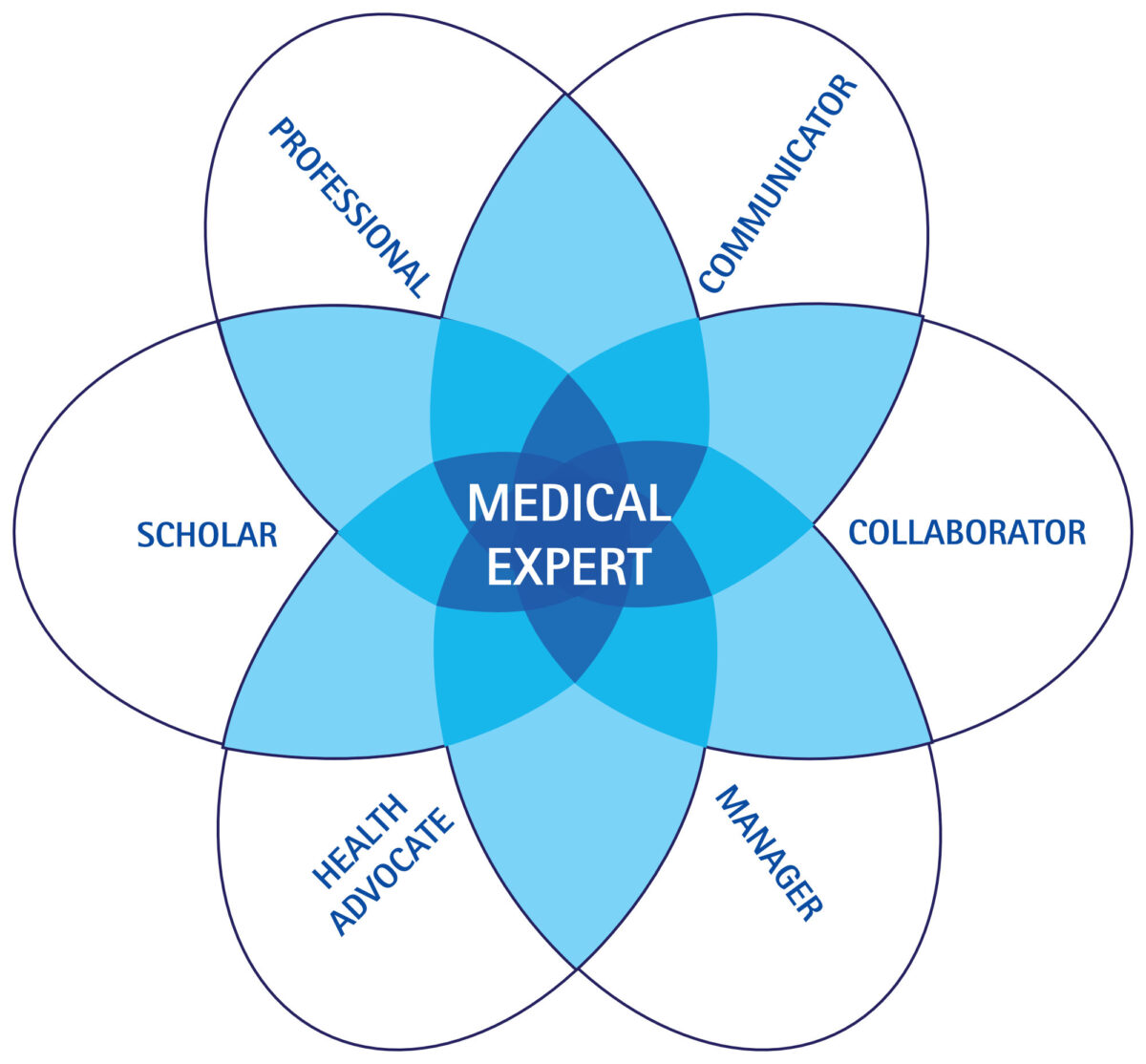
The special character of the AIGT should be emphasized, as it is a unique hybrid of curative medicine and public health, and in both areas the AIGT should develop leadership skills (Figure 4). In the new curriculum these are now called areas of expertise.
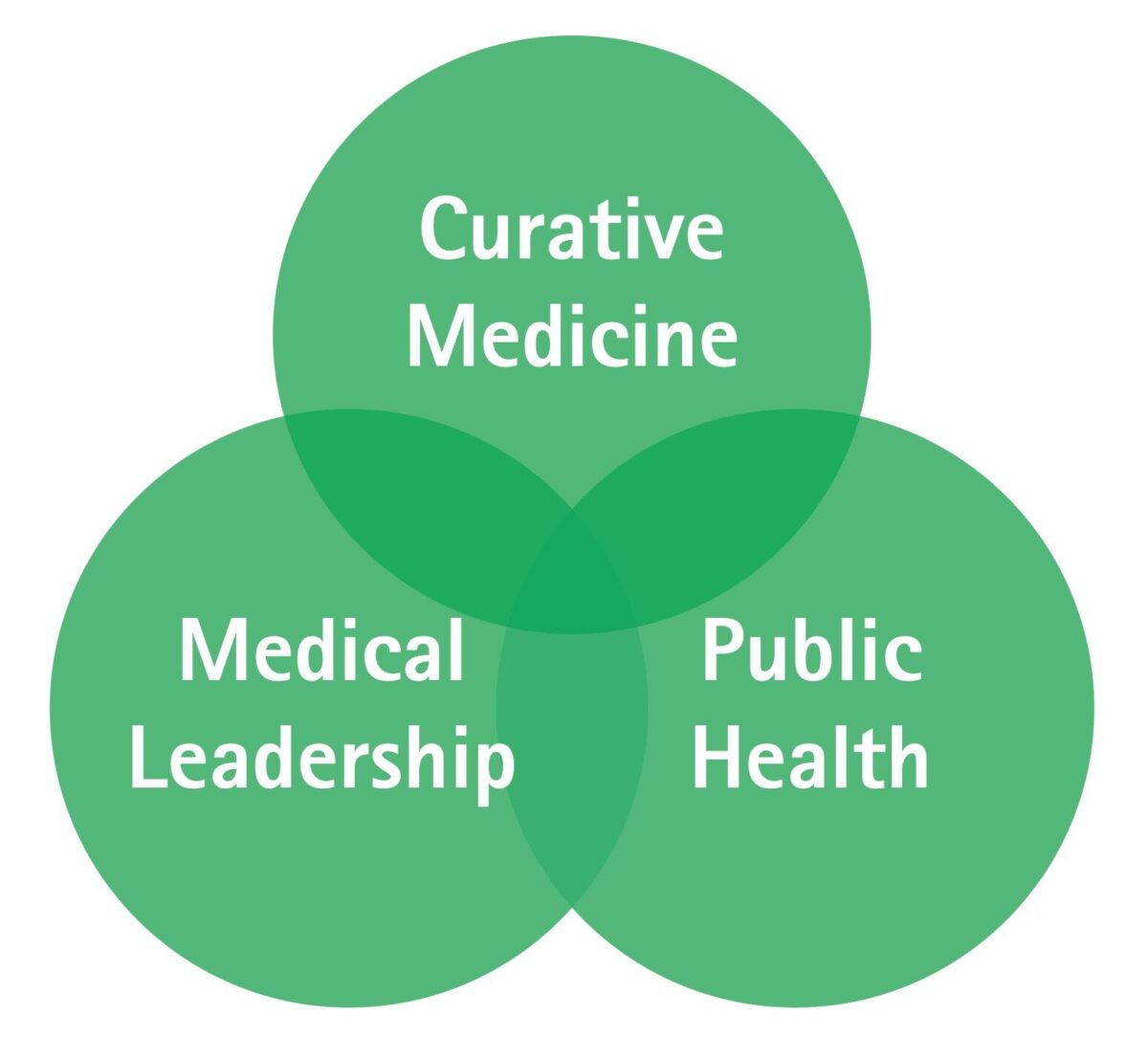
In the revised curriculum, each area of expertise starts with a general description, followed by a description of specific CanMEDS competencies in a general and in an international context.
Content of the curriculum
The content of the current curriculum is captured in themes that elaborated extensively on all aspects of the field and are worked out according to the CanMEDS competencies. While the result was very comprehensive, some overlap could not be avoided. For this reason, in the new curriculum, the number of themes will be limited. Furthermore, Entrusted Professional Activities (EPA’s) are identified that relate to these new themes. These EPA’s allow an assessment of whether the candidate has mastered the relevant activity typical for an AIGT and can be entrusted to perform these unsupervised. Reorganising the content in this way should give supervisors more direction and guidance during the training of the residents in Global Health and Tropical Medicine.
These adaptations will hopefully provide more practical guidance to the supervisors in the training institutions. They also seek to give a better foundation for the description and practical implementation of the two different profiles of the curriculum.
Conclusion
The new curriculum that is under development is a next step in further improving the training programme for Medical Doctors in Global Health and Tropical Medicine. It is in line with new insights on how professional training is taking shape in the Netherlands and describes the programme content in terms of newly defined EPAs. Besides acknowledging all the good of the first official curriculum for AIGT, it hopes to provide more practical guidance for supervisors in the training institutions.
Reference
- Zijlstra E.E. From Global Health to Tropical Medicine? Medicus Tropicus bulletin 2017; 55: 3-6.

















































